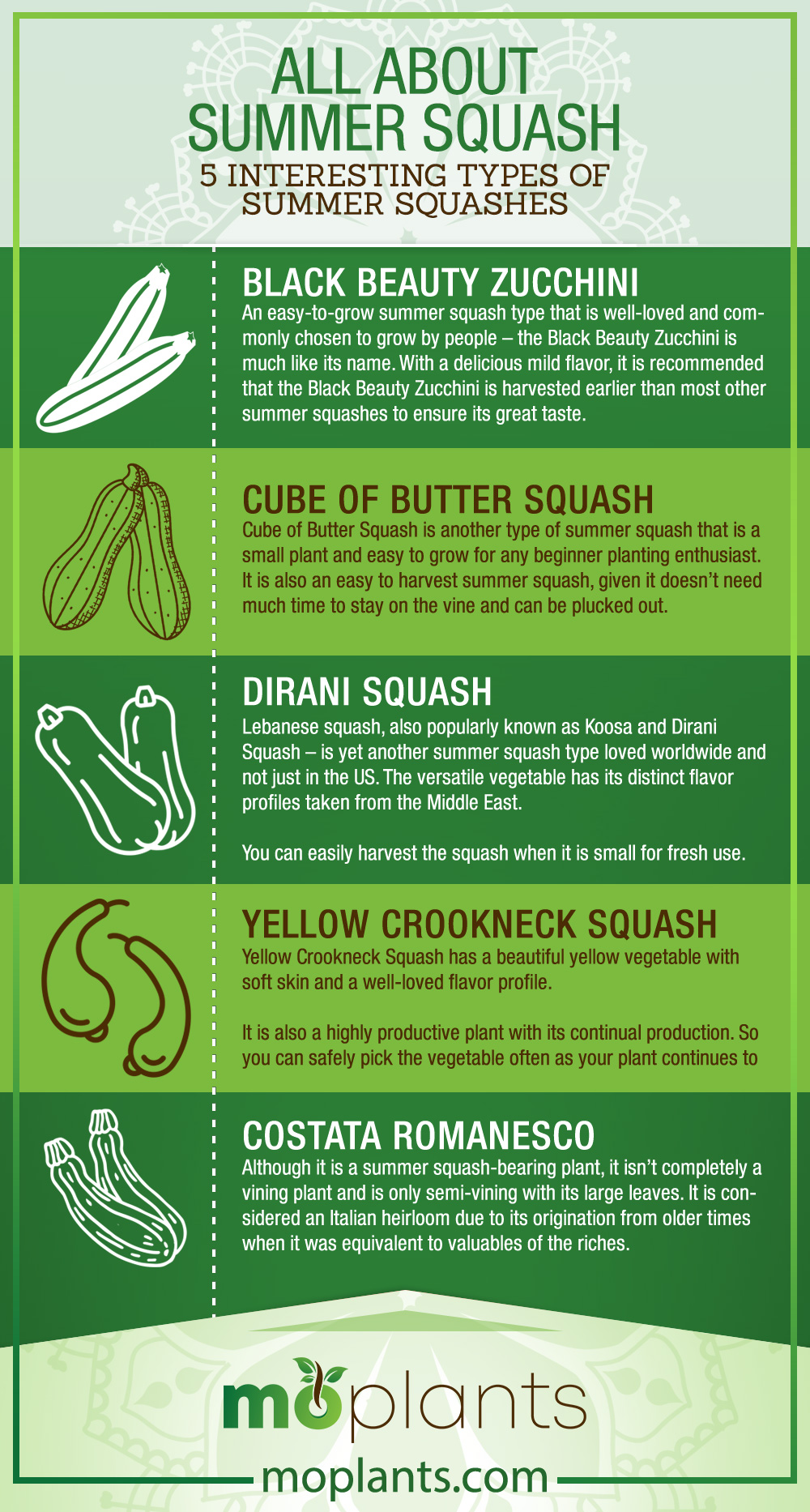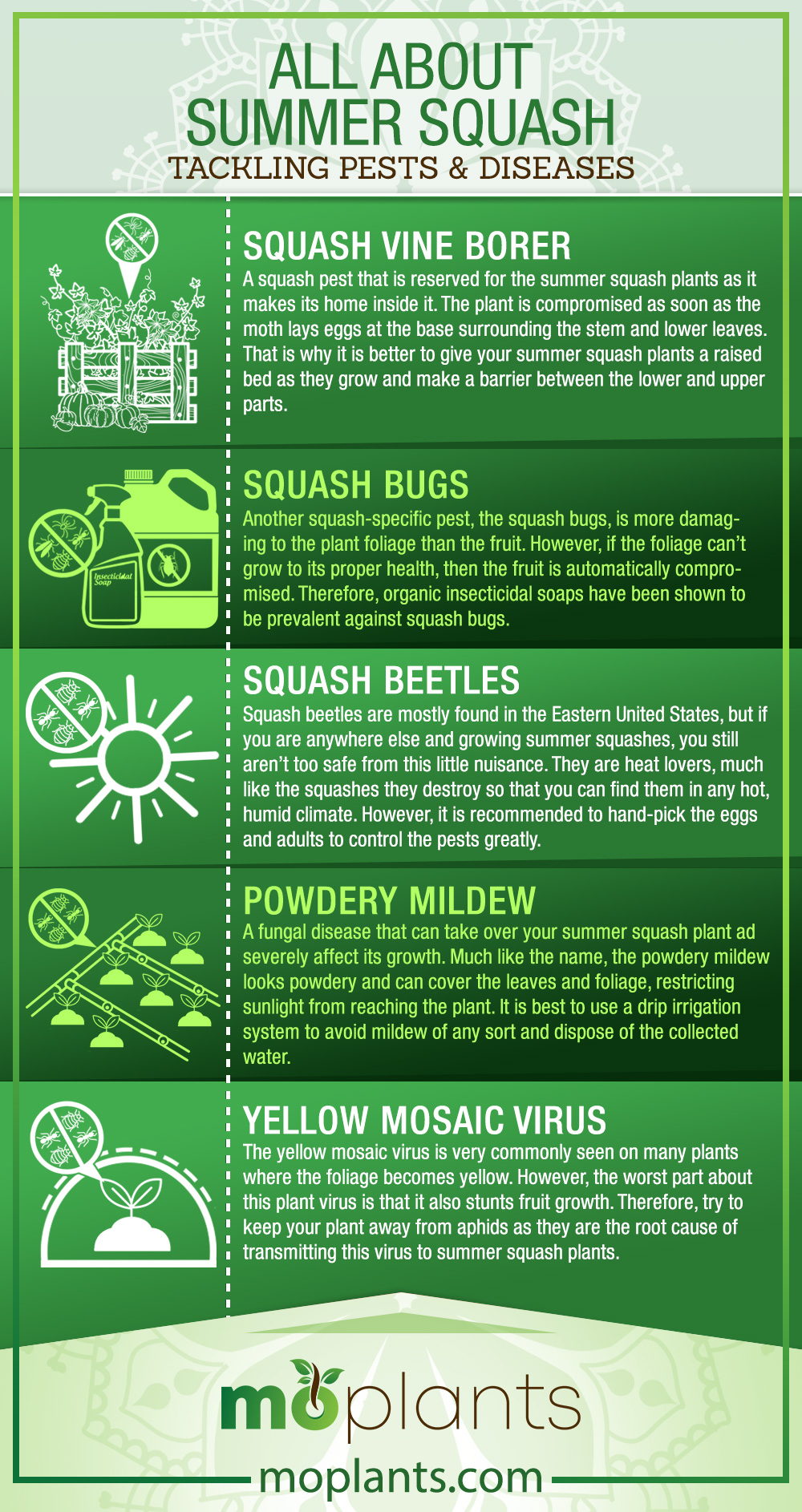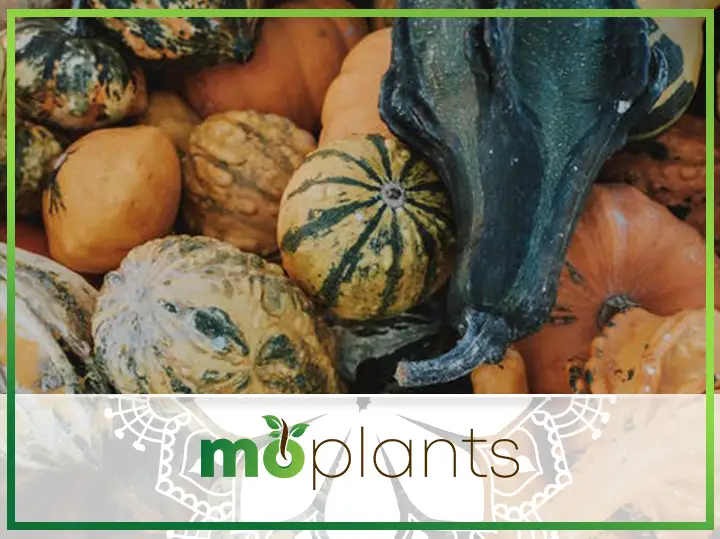Summer squash is more of an umbrella term for many different vegetable-bearing plants than a single, specific vegetable or plant type. It is versatile depending on where the plant type originates and where it is currently being grown.
Therefore, it can include all types of different squashes, zucchinis, and even melons and pumpkins. That is why depending on your taste and gardening rendezvous. You can choose among many different varieties of summer squashes to grow this season.
As summer squash is a well-known vining plant, many people tend to find it easier to grow and look after. You can easily pick a place for it and find the process very similar to almost any other vining plant. Moreover, the vegetable can remain fresh in the refrigerator for a long time.
So now that you are sold on the many amazing pointers about summer squash, we’re sure you’d like to try your hand at growing it. So buckle up and get your shovels out because we will take you along on this in-depth guide about growing summer squash.
So let’s get started, shall we?
How to Grow Summer Squash?
Growing summer squashes can be ideal for people who have a knack for nurturing multiple plants in their garden at once because the best way of growing summer squashes is to grow multiple types in one go.
Summer squash is from the species called Cucurbita Pepo. What’s interesting is that the same species is responsible for winter squashes as well as pumpkins. That is why when many botanical and gardening experts refer to ‘squash,’ they mean it as a universal term for all.
Therefore, growing summer squashes is also a mediating process similar to many vining plants and fruits like melons and pumpkins. However, summer squashes have tender skin, mostly found in yellow and green.
Deciding On When, Where & How to Plant Summer Squash
This should come as a surprise to anyone that the summer squash loves and thrives under heat. That’s why in order to yield the best summer squash garden crop, you should wait until all the chances of frost have died down and spring is officially in the air.
After the climate has settled and enough heat is produced to nurture a summer squash plant, it is time to decide where to plant it. However, this isn’t that difficult, especially if you have a sunny backyard.
However, it is crucial to ensure that you first sow the seeds in a pot. Although squash seeds can be directly sown, sowing them in pots gives them a health boost. You can move them directly into the ground once the seedlings have hardened.
5 Interesting Types of Summer Squashes
As we mentioned earlier, summer squash is a universal term encompassing many different types of vegetable-bearing plants. Therefore, naturally, there are many different types of summer squashes that you can choose to grow.
So following is a list of our favorite five types of summer squashes – easy to grow and delicious to eat:
Black Beauty Zucchini
An easy-to-grow summer squash type that is well-loved and commonly chosen to grow by people – the Black Beauty Zucchini is much like its name. It is dark green with a bright, creamy white flesh in stark contrast to the skin.
With a delicious mild flavor, it is recommended that the Black Beauty Zucchini is harvested earlier than most other summer squashes to ensure its great taste. Otherwise, the seeds can grow big and take over most of the vegetable quality.
However, the best part about Black Beauty Zucchini is that you don’t have to eat it right away and can store it well. In fact, the texture stays even if you freeze the vegetable. It can be used for salads and soups and can even be made into pasta.
Cube of Butter Squash
Cube of Butter Squash is another type of summer squash that is a small plant and easy to grow for any beginner planting enthusiast. It is also an easy to harvest summer squash, given it doesn’t need much time to stay on the vine and can be plucked out.
Much like its name, the Cube of Butter Squash has a sweet, buttery flavor, and even the flesh looks like butter due to its creamy white color. The best part about this summer squash is that it can be enjoyed both raw and cooked.
Hence, brace yourself to have it raw in salads or cook it tenderly for fresh eating, stir-frying, grilled or roasted with other roasted vegetables, etc. Simply, a wide variety of dishes can be made to host Cube of Butter Squash as a star.
Dirani Squash
Lebanese squash, also popularly known as Koosa and Dirani Squash – is yet another summer squash type loved worldwide and not just in the US. The versatile vegetable has its distinct flavor profiles taken from the Middle East.
It is such a productive plant that you can easily plant this and enjoy a wholesome squash treat with its continuous delivery. The best part is that it is a compact little plant that doesn’t take up much space yet doesn’t compromise on the vegetable quality.
You can easily harvest the squash when it is small for fresh use. However, letting it grow larger entails a rather full-moon vegetable that can show up as an unsung hero for a multitude of recipes originating around the world.
Yellow Crookneck Squash
It is a summer squash-producing plant, but unlike its vine-y cousins, this one is more of a bush. However, much like its name, the Yellow Crookneck Squash has a beautiful yellow vegetable with soft skin and a well-loved flavor profile.
It is also a highly productive plant with its continual production. So you can safely pick the vegetable often as your plant continues to grow and produce them. It has firmer flesh, too, compared to other summer squashes but tastes just as great.
Due to firmer flesh, unlike other summer squashes, you can easily steam this one, and it would retain its shape. Best to enjoy it with a side of rice or meat or other roasted vegetables.
Moreover, you can find several recipes that feature the summer squash, making it a staple in your pantry.
Costata Romanesco
This Italian hero of all the summer squashes had to make it to our list. After all, much like its charming name, it has a nutty, complex flavor to its attribution. Native to Italy, it has come about to be loved worldwide.
Although it is a summer squash-bearing plant, it isn’t completely a vining plant and is only semi-vining with its large leaves. It is considered an Italian heirloom due to its origination from older times when it was equivalent to valuables of the riches.
Today, you can have it raw, cook it to tender, fry it with its flower and enjoy the distinctive ribs the vegetable has as texture over it. Moreover, being Italian means it greatly makes part and parcel of Italian cuisine like pizza, pasta, etc.
Infographic

Watering Requirements
Summer squash plants take their water intake very seriously. This means that you should be up on your gardening schedule every day to know exactly when to water your summer squash plants. In fact, they need to be watered even if it has rained but not enough to overfill.
Therefore, a regular squash plant would require almost an inch of water spreading every week. If your area observes a longer stretch of summer, increase the water spread to two inches. However, closely observe the plant’s wellbeing.
Overhead watering doesn’t sit well with summer squash plants. So if an organic mulch spread has retained water to continue moisture provision, there is a good chance that you are well equipped with the plant’s water requirements.
Boosting via Fertilizers
Summer squash is very handsy with its growth factors, from plenty of heat and light to water and soil. That is why organic fertilizers aren’t a complete no-no when it comes to boosting your summer squash health.
A well-amended soil can help the plant compost alongside an organic fertilizer to periodically help with foliar growth and fruit production. Hence, try to research your fertilizer before and see if the NPK ratio has a good number.
An efficient boost of nutrients will not go unappreciated by the summer squash planter as it will only entail better and healthier plant growth to give you high-quality vegetables. You should avoid synthetic fertilizers as they run the risk of nitrogen burn.
Tackling Pests & Diseases
Believe it or not but squash vines are prone to pests and diseases. It is crucial to take care of the plants vigorously to avoid compromising your plant’s health to a little critter who may havemade a home in your vegetable garden.
Hence, here are some of the most common pests and diseases that you may likely succumb to if you didn’t take care of your summer squash plants:
Squash Vine Borer
A squash pest that is reserved for the summer squash plants as it makes its home inside it. The plant is compromised as soon as the moth lays eggs at the base surrounding the stem and lower leaves. That is why it is better to give your summer squash plants a raised bed as they grow and make a barrier between the lower and upper parts.
Squash Bugs
Another squash-specific pest, the squash bugs, is more damaging to the plant foliage than the fruit. However, if the foliage can’t grow to its proper health, then the fruit is automatically compromised. Therefore, organic insecticidal soaps have been shown to be prevalent against squash bugs. You can spray them with a water sprinkler every now and then to keep the bugs at bay.
Squash Beetles
Squash beetles are mostly found in the Eastern United States, but if you are anywhere else and growing summer squashes, you still aren’t too safe from this little nuisance. They are heat lovers, much like the squashes they destroy so that you can find them in any hot, humid climate. However, it is recommended to hand-pick the eggs and adults to control the pests greatly.
Powdery Mildew
A fungal disease that can take over your summer squash plant ad severely affect its growth. Much like the name, the powdery mildew looks powdery and can cover the leaves and foliage, restricting sunlight from reaching the plant. It is best to use a drip irrigation system to avoid mildew of any sort and dispose of the collected water.
Yellow Mosaic Virus
The yellow mosaic virus is very commonly seen on many plants where the foliage becomes yellow. However, the worst part about this plant virus is that it also stunts fruit growth. Therefore, try to keep your plant away from aphids as they are the root cause of transmitting this virus to summer squash plants.
Infographic

Time to Harvest
It is highly recommended to harvest summer squashes, depending on each type. Some do really well when harvested early, while letting some grow is best. However, one thing to always remember is never to pluck them. As summer squash plants are vining plants, plucking the vegetables can break off or disturb the vine stem and hinder future growth and production. Make sure you use shears or scissors and safely nip off the vegetable from the vine and enjoy.
Wrapping Up
It is safe to say that summer squashes are a pleasure to grow and eat. They are a versatile, wondrous plant that doesn’t take up much space, especially if you have the knack to grow them on a trellis.
You can easily enjoy your healthy, homegrown helping of squashes to include in various dishes. You can grill, roast, or slice it up to include in sandwiches, burgers, steak sides, etc. The versatile veggie can make for a great item from pasta to even pizza toppings. Cheers!
Are you looking for a gardening and planting resource that has it all? Then connect with us at Mo Plants – your one-stop gardening directory for more gardening know-how. Our comprehensive guides will be an excellent resource for reading more about other plants.


